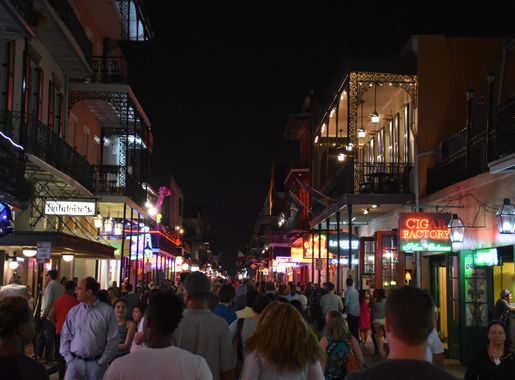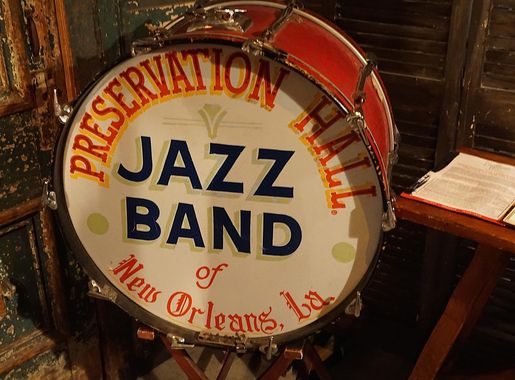
The Enigmatic French Quarter of New Orleans
Explore the French Quarter, New Orleans' oldest and most vibrant neighborhood, known for its rich history, eclectic architecture, and pulsating nightlife.
The French Quarter, or Vieux Carré, is the vibrant heart of New Orleans, Louisiana. Known for its rich history, eclectic architecture, and lively atmosphere, this neighborhood is a must-visit for any tourist. Founded in 1718, the French Quarter is the oldest neighborhood in the city and offers a unique blend of Spanish, French, Creole, and American cultures. Stroll down the cobblestone streets and you'll find yourself amidst historic landmarks, jazz clubs, and bustling markets. The iconic Bourbon Street is the epicenter of nightlife, lined with bars and clubs that pulse with music and excitement. For a more relaxed experience, visit Jackson Square, a beautiful park surrounded by historic buildings and street performers. The French Quarter is also a culinary paradise. From beignets at Café du Monde to gourmet Creole cuisine at upscale restaurants, your taste buds are in for a treat. Don't miss out on the French Market, where you can shop for local produce, crafts, and souvenirs. Whether you're a history buff, a foodie, or just looking to soak in the lively atmosphere, the French Quarter offers something for everyone.
Local tips in French Quarter
- Visit early in the morning to avoid crowds and enjoy a quieter experience.
- Wear comfortable shoes—cobblestone streets can be tricky to navigate.
- Carry cash; some smaller shops and vendors may not accept credit cards.
- Don't miss the chance to take a guided tour to learn about the area's rich history.
- Be cautious on Bourbon Street at night; it can get very crowded.
The Enigmatic French Quarter of New Orleans
The French Quarter, or Vieux Carré, is the vibrant heart of New Orleans, Louisiana. Known for its rich history, eclectic architecture, and lively atmosphere, this neighborhood is a must-visit for any tourist. Founded in 1718, the French Quarter is the oldest neighborhood in the city and offers a unique blend of Spanish, French, Creole, and American cultures. Stroll down the cobblestone streets and you'll find yourself amidst historic landmarks, jazz clubs, and bustling markets. The iconic Bourbon Street is the epicenter of nightlife, lined with bars and clubs that pulse with music and excitement. For a more relaxed experience, visit Jackson Square, a beautiful park surrounded by historic buildings and street performers. The French Quarter is also a culinary paradise. From beignets at Café du Monde to gourmet Creole cuisine at upscale restaurants, your taste buds are in for a treat. Don't miss out on the French Market, where you can shop for local produce, crafts, and souvenirs. Whether you're a history buff, a foodie, or just looking to soak in the lively atmosphere, the French Quarter offers something for everyone.
Iconic landmarks you can’t miss
Jackson Square
Explore the vibrant culture and history at Jackson Square, New Orleans' iconic landmark in the heart of the French Quarter.

The Presbytère
Uncover the vibrant history of Louisiana at The Presbytère, where captivating exhibits tell the stories of culture, resilience, and celebration.

Gallier House
Discover the architectural elegance and historical significance of Gallier House, a gem in New Orleans' French Quarter, perfect for history lovers.
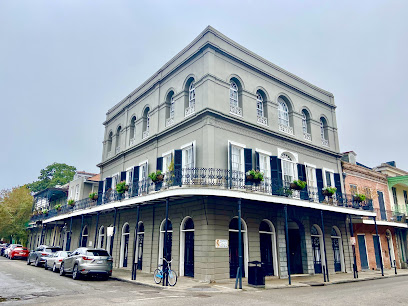
Joan of Arc, Maid of Orleans
Discover the Joan of Arc Monument in New Orleans, a captivating tribute to the Maid of Orleans amidst the vibrant French Quarter.
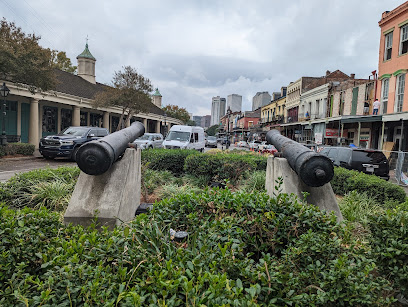
The LaBranche House
Experience the rich history and architectural beauty of The LaBranche House, a historic landmark in the heart of New Orleans' French Quarter.
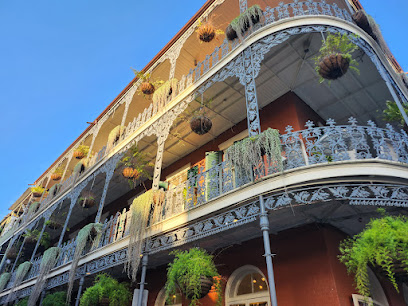
Old Man River Statue
Explore the Old Man River Statue in New Orleans' French Quarter, a historical landmark that celebrates the spirit of the Mississippi River.
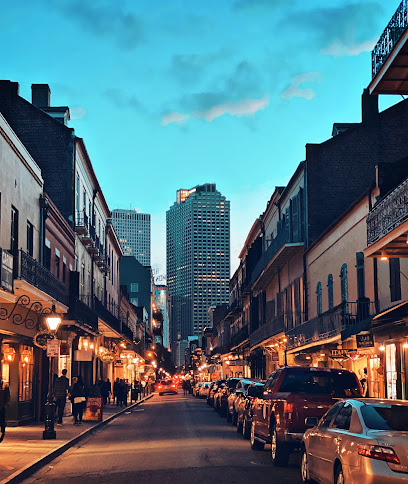
Lady of New Orleans (Statue)
Discover the enchanting Lady of New Orleans statue, a historical landmark in the vibrant French Quarter, symbolizing the spirit and culture of the city.
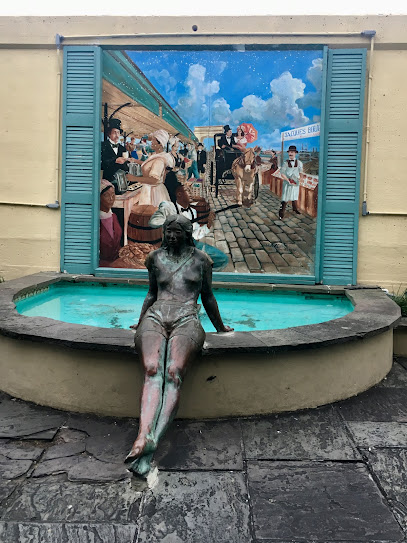
Barthelemy Lafon's crypt
Discover Barthelemy Lafon's crypt in Saint Louis Cemetery #1, a historical gem showcasing New Orleans' unique funerary architecture and rich cultural heritage.
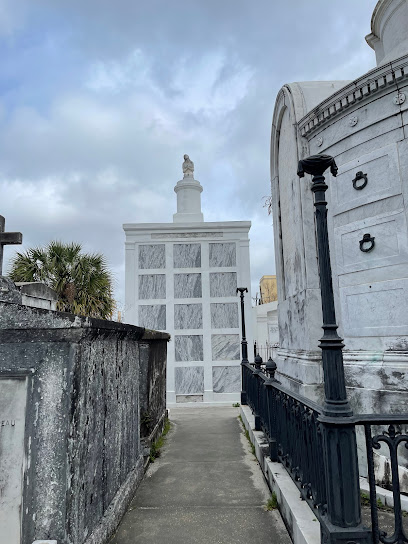
Bernardo de Galvez Monument
Discover the Bernardo de Galvez Monument in New Orleans, a tribute to the Spanish governor who shaped American history and culture.
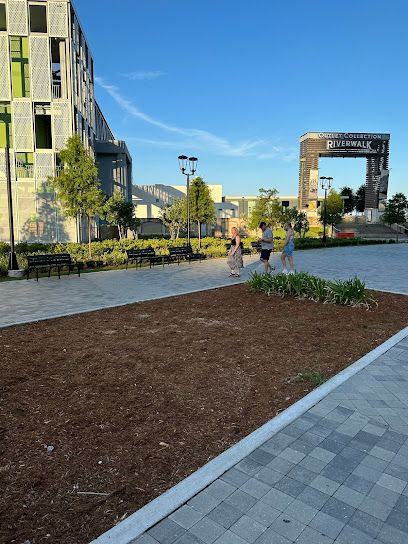
De La Ronde House
Explore the historic De La Ronde House in New Orleans' French Quarter, a remarkable landmark showcasing the city's unique architectural heritage.

Unmissable attractions to see
Audubon Aquarium
Dive into the vibrant marine world at the Audubon Aquarium in New Orleans, a captivating destination for families and ocean enthusiasts alike.
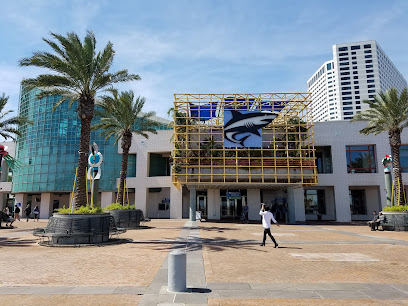
Woldenberg Park
Explore Woldenberg Park in New Orleans: A serene riverside retreat with live music, beautiful landscapes, and cultural experiences.
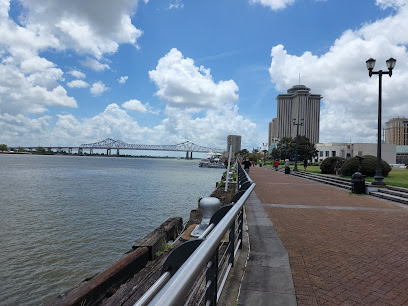
St. Louis Cathedral
Discover the stunning beauty and rich history of St. Louis Cathedral, an iconic symbol of New Orleans' vibrant culture and spirituality.
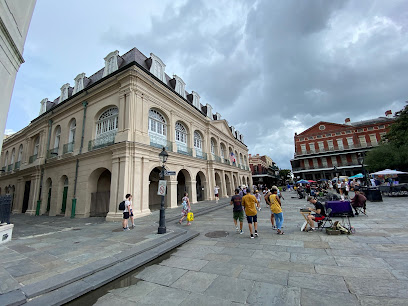
New Orleans Historic Voodoo Museum
Explore the mysterious world of Voodoo at the New Orleans Historic Voodoo Museum, where history and spirituality intertwine in the heart of the French Quarter.
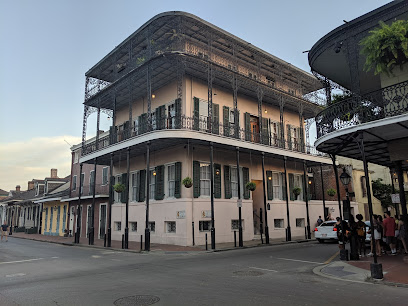
The Presbytère
Explore the rich history of Louisiana at The Presbytère, a captivating museum in the heart of New Orleans' French Quarter.
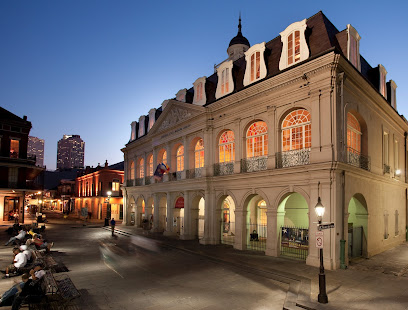
The Cabildo
Explore the rich tapestry of New Orleans' history at The Cabildo, a captivating local history museum in the heart of the French Quarter.
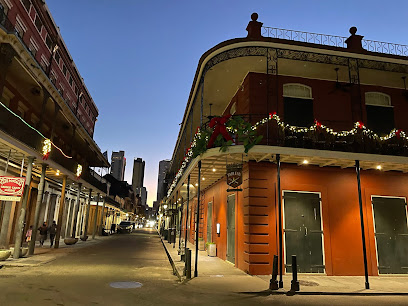
French Quarter Visitor Center
Explore New Orleans' vibrant culture and history at the French Quarter Visitor Center, your gateway to the heart of the French Quarter.
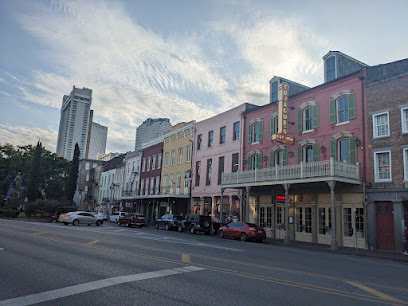
Washington Artillery Park
Explore Washington Artillery Park, a serene escape in New Orleans' French Quarter, blending history, culture, and stunning landscapes.

Le Monde Creole / Insider's French Quarter
Explore the vibrant culture and history of New Orleans at Le Monde Creole, your gateway to the heart of the French Quarter.
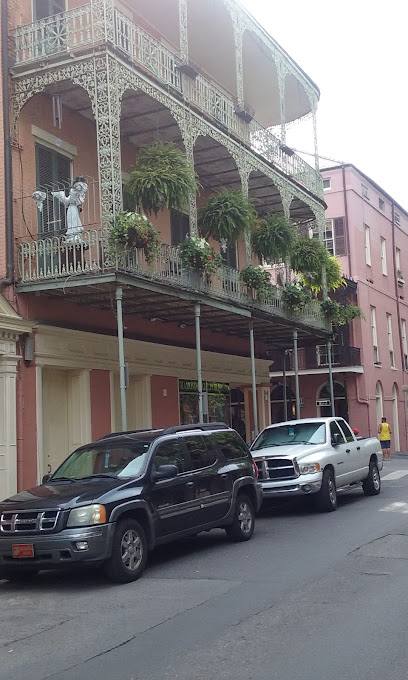
Essential places to dine
Olde Nola Cookery
Experience authentic Cajun flavors and fresh seafood at Olde Nola Cookery, a beloved dining spot in New Orleans' vibrant French Quarter.

Muriel's Jackson Square
Discover the elegance and flavor of Muriel's Jackson Square in New Orleans' historic French Quarter—a perfect blend of Southern cuisine and vibrant atmosphere.
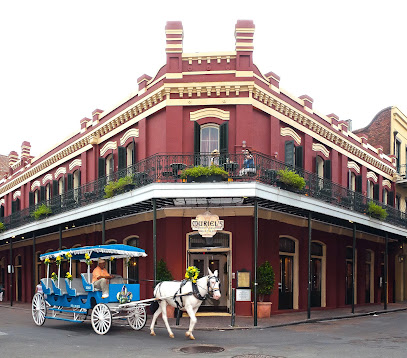
The Original French Market Restaurant and Bar
Discover authentic Creole cuisine at The Original French Market Restaurant and Bar in New Orleans' historic French Quarter.
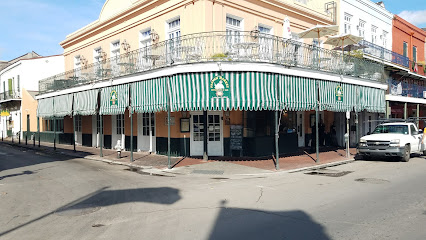
The Original Pierre Maspero's
Experience authentic Cajun and Creole cuisine at The Original Pierre Maspero's in New Orleans' lively French Quarter.
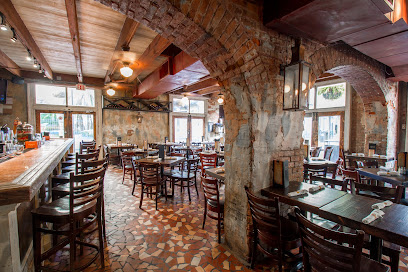
Antoine's Restaurant
Discover Antoine's Restaurant: A historic French and Creole culinary experience in New Orleans' charming French Quarter.
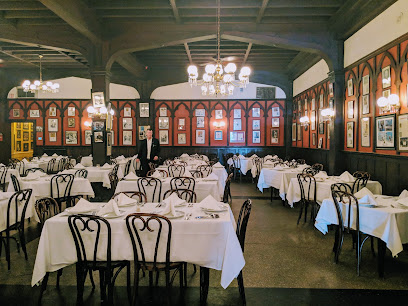
Mr. B's Bistro
Experience authentic Creole and Cajun flavors at Mr. B's Bistro—New Orleans' premier destination for fine dining and seafood delights.
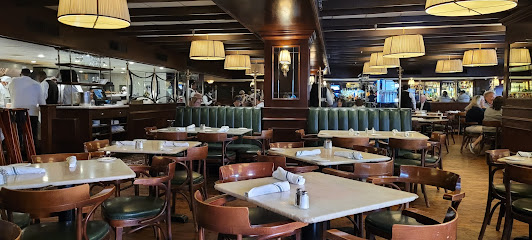
Tableau by Dickie Brennan & Co.
Discover exquisite Creole dining at Tableau by Dickie Brennan & Co., where traditional flavors meet stunning views in New Orleans' historic French Quarter.
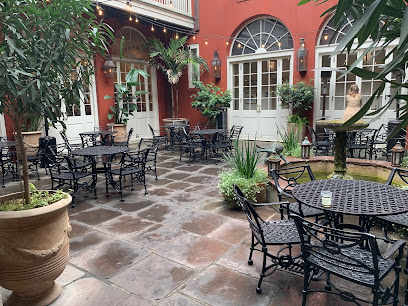
Curio Bistro
Discover the flavors of Creole cuisine at Curio Bistro - where tradition meets innovation in the heart of New Orleans' French Quarter.
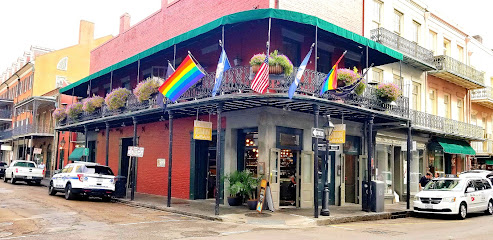
Tujague's
Experience authentic Cajun and Creole cuisine at Tujague's, New Orleans' historic restaurant blending rich flavors with vibrant culture.
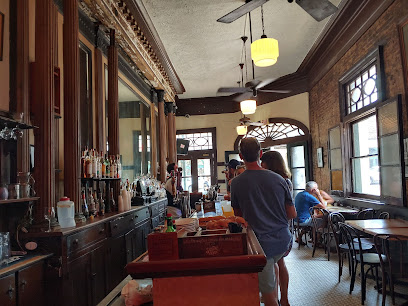
Cafe Sbisa
Experience authentic Creole flavors at Cafe Sbisa in New Orleans' historic French Quarter - where tradition meets culinary excellence.
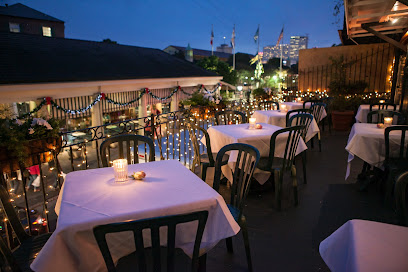
Markets, malls and hidden boutiques
Shops of the Colonnade
Explore the Shops of the Colonnade in New Orleans for unique crafts, local delicacies, and a vibrant cultural experience in the heart of the French Quarter.
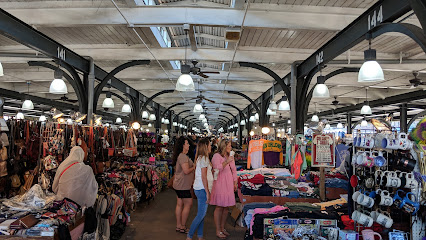
Marie Laveau's House Of Voodoo
Discover the enchanting world of voodoo at Marie Laveau's House of Voodoo, a unique shop in New Orleans' French Quarter offering authentic artifacts and cultural insights.

Boutique Du Vampyre
Explore the gothic allure of Boutique Du Vampyre in New Orleans, where fantasy meets reality in a treasure trove of supernatural gifts.
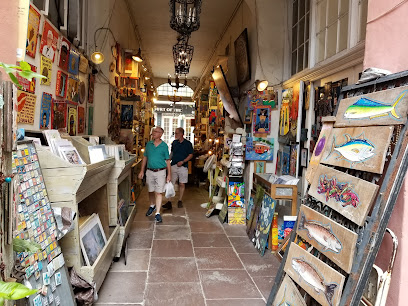
Dark Matter Oddities & Artisan Collective
Explore Dark Matter Oddities in New Orleans for a unique blend of antiques, art, and artisan treasures in the heart of the French Quarter.
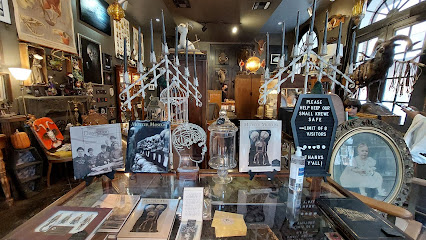
Fleurty Girl French Quarter
Discover the heart of New Orleans at Fleurty Girl, a charming gift shop and boutique in the vibrant French Quarter, offering unique local treasures.
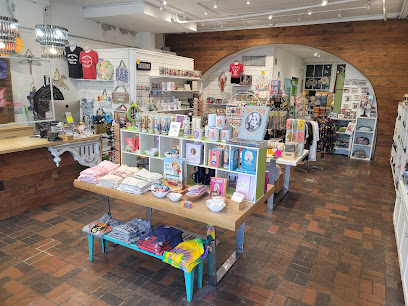
No Rules Fashion
Discover unique clothing and accessories that embody the vibrant spirit of New Orleans at No Rules Fashion, a boutique for trendsetters.
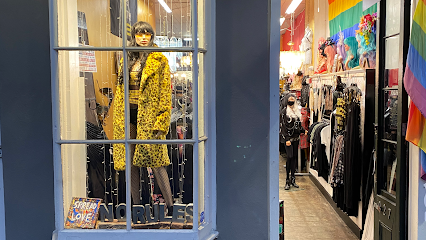
Forever New Orleans
Discover Forever New Orleans: Your destination for unique gifts, boutique fashion, and local treasures in the heart of the French Quarter.
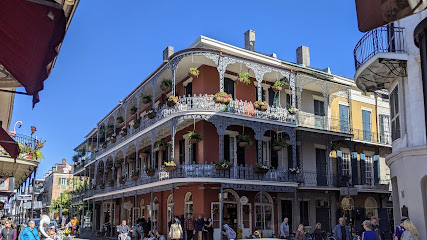
Traders' Emporium Outlet
Explore the vibrant culture of New Orleans at Traders' Emporium Outlet, your go-to gift shop for unique souvenirs and local artisan crafts.
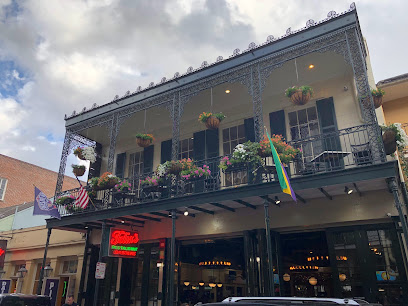
Dirty Coast
Experience the essence of New Orleans at Dirty Coast, your go-to destination for unique gifts, apparel, and local art in the heart of the French Quarter.
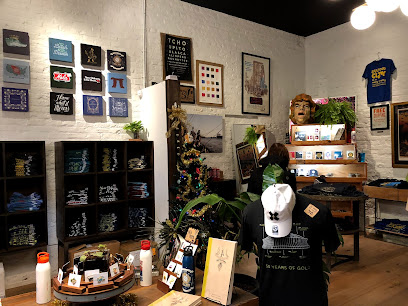
The Shop: Oddities at Unique NOLA
Dive into the bizarre and beautiful at The Shop: Oddities at Unique NOLA, where every corner reveals a treasure waiting to be discovered.
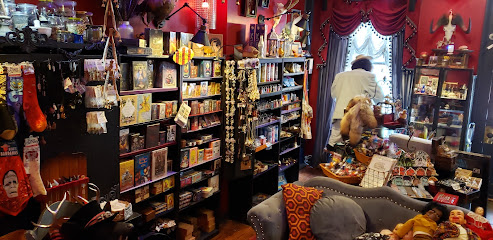
Essential bars & hidden hideouts
Lafitte's Blacksmith Shop Bar
Experience the historic charm of Lafitte's Blacksmith Shop Bar, one of the oldest bars in the U.S., nestled in New Orleans' vibrant French Quarter.
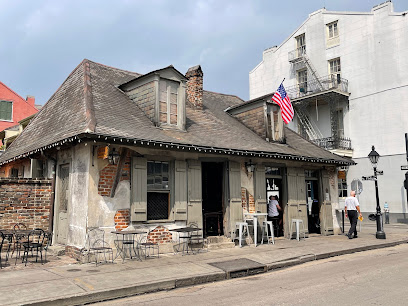
Pat O'Brien's
Experience the vibrant essence of New Orleans at Pat O'Brien's, a bar and restaurant known for its signature cocktails and live music in the heart of the French Quarter.
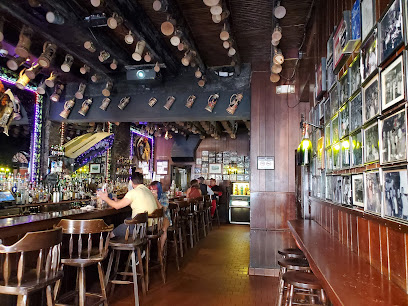
The Carousel Bar & Lounge
Discover the enchanting Carousel Bar & Lounge in New Orleans, where history meets whimsy in a delightful cocktail experience.
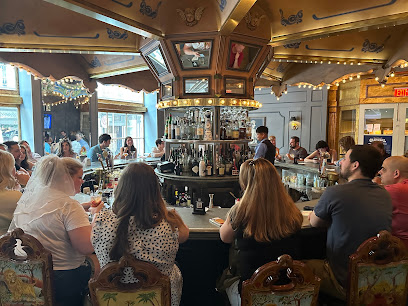
Old Absinthe House
Discover the historic Old Absinthe House, a legendary bar in the heart of the French Quarter, famous for its exquisite absinthe cocktails and vibrant atmosphere.
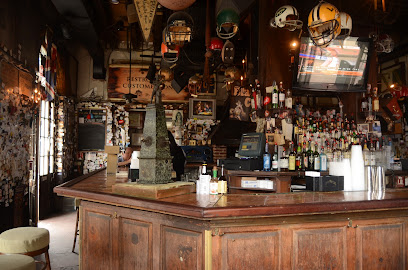
Bar Tonique
Discover Bar Tonique, a premier cocktail bar in New Orleans' French Quarter, serving innovative drinks in a vibrant atmosphere.
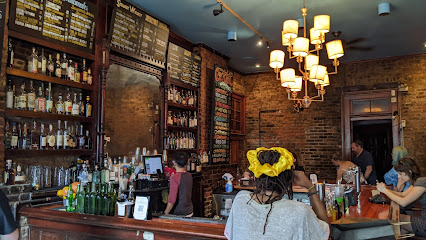
Bourbon Heat
Experience the vibrant nightlife of New Orleans at Bourbon Heat, where live music and signature cocktails create unforgettable memories.

Good Friends Bar
Discover the charm of Good Friends Bar in New Orleans' French Quarter - a lively spot perfect for drinks, music, and unforgettable moments.
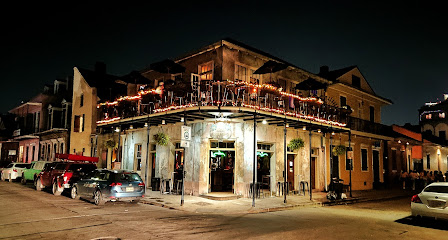
Bourbon 'O' Bar
Discover the lively Bourbon 'O' Bar in New Orleans, where live music meets exquisite cocktails in a charming French Quarter setting.
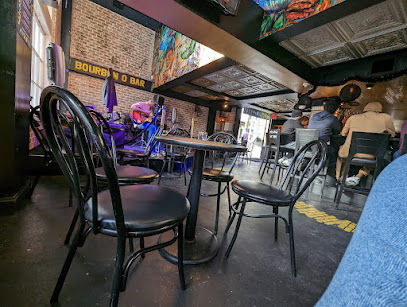
21st Amendment Bar at La Louisiane
Experience the spirit of New Orleans at the 21st Amendment Bar, where craft cocktails and vibrant ambiance create unforgettable moments.
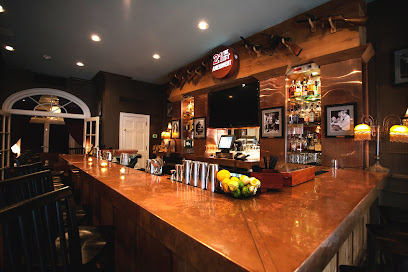
Harry's Corner
Discover Harry's Corner, an inviting cocktail bar in New Orleans' French Quarter, where vibrant atmosphere meets expertly crafted drinks.
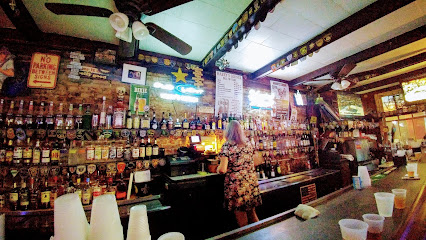
Local Phrases
-
- HelloBonjour
[bon-zhoor] - GoodbyeAu revoir
[oh re-vwah] - YesOui
[wee] - NoNon
[nohn] - Please/You're welcomeS'il vous plaît/De rien
[see voo pleh/dee ree-ahn] - Thank youMerci
[mehr-see] - Excuse me/SorryExcusez-moi/Désolé
[ex-kew-zay mwah/deh-zoh-lay] - How are you?Comment ça va?
[koh-mohn sah vah] - Fine. And you?Bien. Et toi?
[byen. ay twah] - Do you speak English?Parlez-vous anglais?
[par-lay voo ahn-glay] - I don't understandJe ne comprends pas
[zhuh nuh kohm-prahn pah]
- HelloBonjour
-
- I'd like to see the menu, pleaseJe voudrais voir le menu, s'il vous plaît
[zhuh voo-dray vwahr luh muh-nyoo, see voo pleh] - I don't eat meatJe ne mange pas de viande
[zhuh nuh mahnj pah duh vyand] - Cheers!Santé!
[sahn-tay] - I would like to pay, pleaseJe voudrais payer, s'il vous plaît
[zhuh voo-dray pay-ay, see voo pleh]
- I'd like to see the menu, pleaseJe voudrais voir le menu, s'il vous plaît
-
- Help!Au secours!
[oh suh-coor] - Go away!Allez-vous-en!
[ah-lay voo zahn] - Call the Police!Appelez la police!
[ah-play lah poh-lees] - Call a doctor!Appelez un médecin!
[ah-play uh may-sahn] - I'm lostJe suis perdu
[zhuh swee pair-doo] - I'm illJe suis malade
[zhuh swee mah-lahd]
- Help!Au secours!
-
- I'd like to buy...Je voudrais acheter...
[zhuh voo-dray ah-shet-ay] - I'm just lookingJe regarde juste
[zhuh ruh-gard zhust] - How much is it?Combien ça coûte?
[kohm-byen sah koot] - That's too expensiveC'est trop cher
[say troh share] - Can you lower the price?Pouvez-vous baisser le prix?
[poo-vay voo bay-say luh pree]
- I'd like to buy...Je voudrais acheter...
-
- What time is it?Quelle heure est-il?
[kell ur ay eel] - It's one o'clockIl est une heure
[eel ay oon ur] - Half past (10)Dix et demi
[dees ay duh-mee] - MorningMatin
[mah-tahn] - AfternoonAprès-midi
[ah-pray mee-dee] - EveningSoir
[swah] - YesterdayHier
[yair] - TodayAujourd'hui
[oh-zhoor-dwee] - TomorrowDemain
[duh-mahn] - 1Un
[uhn] - 2Deux
[duh] - 3Trois
[twah] - 4Quatre
[kat] - 5Cinq
[sank] - 6Six
[sees] - 7Sept
[set] - 8Huit
[weet] - 9Neuf
[nuf] - 10Dix
[dees]
- What time is it?Quelle heure est-il?
-
- Where's a/the...?Où est un/le...?
[oo ay uh/luh] - What's the address?Quelle est l'adresse?
[kell ay la-dress] - Can you show me (on the map)?Pouvez-vous me montrer (sur la carte)?
[poo-vay voo muh mohn-tray (soor lah kart)] - When's the next (bus)?Quand est le prochain (bus)?
[kahnd ay luh proh-shahn (bus)] - A ticket (to ....)Un billet (pour ....)
[uhn bee-yay (poor)]
- Where's a/the...?Où est un/le...?
History of French Quarter
-
The French Quarter, or Vieux Carré, was established in 1718 when Jean-Baptiste Le Moyne de Bienville founded New Orleans. As the first neighborhood of the city, the French Quarter was designed with a grid layout and featured narrow streets, which reflected the French colonial style. This area became a melting pot of cultures, with influences from French, Spanish, African, and Native American traditions shaping its identity.
-
Following the Treaty of Fontainebleau in 1762, control of New Orleans shifted to Spain, leading to significant changes in the French Quarter. The Spanish ruled from 1763 to 1800, and during this period, many buildings adopted Spanish colonial architectural styles, characterized by wrought-iron balconies and stucco facades. The Cabildo and the Presbytère were constructed during this time, showcasing the blend of French and Spanish influences.
-
In the late 19th and early 20th centuries, the French Quarter emerged as the birthplace of jazz music. Notable musicians like Louis Armstrong and Jelly Roll Morton played in the vibrant clubs and bars of the area. The rich musical heritage of the French Quarter, combined with its lively street performances, festivals, and Mardi Gras celebrations, solidified its reputation as a cultural hub in New Orleans.
-
The devastation of Hurricane Katrina in 2005 brought unprecedented challenges to the French Quarter. While the area largely escaped the severe flooding that affected other neighborhoods, the storm nonetheless impacted businesses, tourism, and the local community. In the years that followed, the French Quarter showcased its resilience, with restoration efforts revitalizing the historic architecture and cultural events, reaffirming its role as a key destination in New Orleans.
-
Today, the French Quarter is celebrated for its vibrant culture, history, and architecture. The neighborhood is home to iconic landmarks such as St. Louis Cathedral, Jackson Square, and the French Market. Street performers, artists, and musicians fill the streets, reflecting the area's ongoing evolution while preserving its rich heritage. Festivals such as the French Quarter Festival and the New Orleans Jazz & Heritage Festival continue to draw visitors and showcase the neighborhood's unique cultural tapestry.
French Quarter Essentials
-
The French Quarter is easily accessible from other neighborhoods in New Orleans. If you are coming from the Central Business District (CBD), it's just a short 15-20 minute walk or a quick ride on the streetcar. The St. Charles Avenue streetcar line takes you to Canal Street, from where you can walk into the heart of the French Quarter. For those coming from the Garden District, the same streetcar can be used. Taxis, rideshares like Uber and Lyft, and public buses also frequently service the area.
-
The French Quarter is best explored on foot due to its compact size and pedestrian-friendly layout. Walking allows you to fully appreciate the historic architecture and vibrant atmosphere. Bicycles are also a popular option, with several bike rental shops available. If you're looking to venture further out, the streetcar is a great way to travel to surrounding neighborhoods. The RTA provides bus services as well, but specific routes may be limited within the quarter.
-
The French Quarter is generally safe for tourists, but caution is advised, especially at night. Areas around Bourbon Street can be more prone to petty crimes, such as pickpocketing and theft. It is advisable to avoid walking alone in less crowded areas after dark. Always stay aware of your surroundings and keep valuables secure.
-
In case of emergency, dial 911 for immediate assistance. The New Orleans Police Department has a presence in the French Quarter, and local hospitals are available for medical emergencies. Familiarize yourself with the locations of the nearest medical facilities and pharmacies in case you need urgent care.
-
Fashion: Do wear comfortable shoes for walking, and consider lightweight clothing in the warm months. Don't wear overly revealing clothing, especially when visiting religious sites like St. Louis Cathedral. Religion: Do be respectful when visiting churches, and avoid loud behavior. Public Transport: Do wait for the streetcar to come to a complete stop before boarding. Don’t block the aisles with bags or belongings. Greetings: Do greet locals with a friendly 'Hello' or 'How y'all doing?' Don't forget to smile and make eye contact. Eating & Drinking: Do try local specialties like beignets and gumbo. Don't drink alcohol in public areas outside of designated zones.
-
To experience the French Quarter like a local, visit the French Market for fresh produce and local crafts. Attend live music events at smaller venues to enjoy authentic New Orleans music. Try to explore the quieter streets, such as Royal Street, for unique shops and art galleries. For an insider's view, join a walking tour that focuses on the neighborhood's history and architecture. Be sure to stop by local eateries and cafes, and don’t be afraid to ask locals for recommendations.
-
When in the French Quarter, it’s essential to respect local customs. Many locals are proud of their unique culture and heritage, so taking an interest in local traditions and history is appreciated. When dining, it is customary to thank the staff and show appreciation for service. Avoid discussing sensitive topics related to politics or religion unless initiated by locals.
-
New Orleans experiences a humid subtropical climate, with hot summers and mild winters. If visiting during the summer, be prepared for heat and humidity. Spring (especially during Mardi Gras) and fall are popular seasons for tourism due to more temperate weather. Plan ahead for major events, as accommodations can book quickly and prices may increase.
Nearby Cities to French Quarter
-
Things To Do in Slidell
-
Things To Do in Houma
-
Things To Do in Gulfport
-
Things To Do in Baton Rouge
-
Things To Do in Biloxi
-
Things To Do in McComb
-
Things To Do in Hattiesburg
-
Things To Do in Lafayette
-
Things To Do in Petaluma
-
Things To Do in Mobile
-
Things To Do in Fairhope
-
Things To Do in Natchez
-
Things To Do in Daphne
-
Things To Do in Gulf Shores
-
Things To Do in Foley



